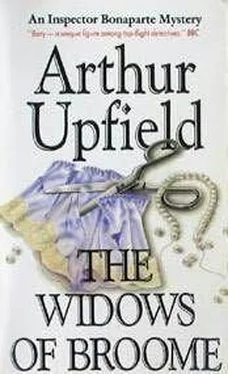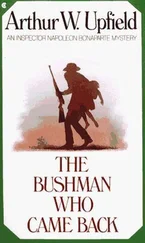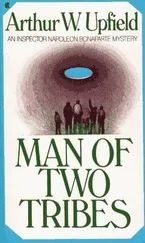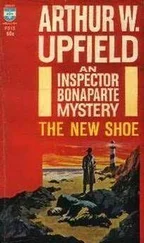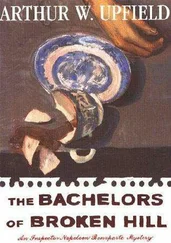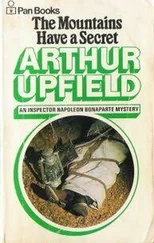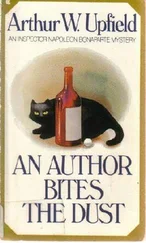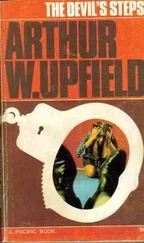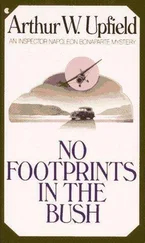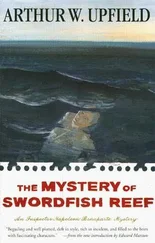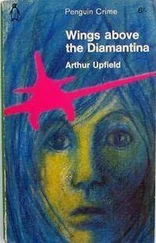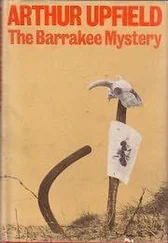Arthur Upfield - The Widows of broome
Здесь есть возможность читать онлайн «Arthur Upfield - The Widows of broome» весь текст электронной книги совершенно бесплатно (целиком полную версию без сокращений). В некоторых случаях можно слушать аудио, скачать через торрент в формате fb2 и присутствует краткое содержание. Жанр: Классический детектив, на английском языке. Описание произведения, (предисловие) а так же отзывы посетителей доступны на портале библиотеки ЛибКат.
- Название:The Widows of broome
- Автор:
- Жанр:
- Год:неизвестен
- ISBN:нет данных
- Рейтинг книги:5 / 5. Голосов: 1
-
Избранное:Добавить в избранное
- Отзывы:
-
Ваша оценка:
- 100
- 1
- 2
- 3
- 4
- 5
The Widows of broome: краткое содержание, описание и аннотация
Предлагаем к чтению аннотацию, описание, краткое содержание или предисловие (зависит от того, что написал сам автор книги «The Widows of broome»). Если вы не нашли необходимую информацию о книге — напишите в комментариях, мы постараемся отыскать её.
The Widows of broome — читать онлайн бесплатно полную книгу (весь текст) целиком
Ниже представлен текст книги, разбитый по страницам. Система сохранения места последней прочитанной страницы, позволяет с удобством читать онлайн бесплатно книгу «The Widows of broome», без необходимости каждый раз заново искать на чём Вы остановились. Поставьте закладку, и сможете в любой момент перейти на страницу, на которой закончили чтение.
Интервал:
Закладка:
The homeward journey was fast. Mr. Dickenson was not nervous. He sang a little. He quoted poetry. Abruptly, he drew Bony’s head to his mouth and whispered:
“I might know that feller again. As he passed me, I could hear his teeth clicking as though he were in mortal fright.”
Bony was about to press a question when Johnno turned back to shout something of the evening, and the car went into a bad sand skid. It almost collided with a tree and almost turned over. Mr. Dickenson chuckled, and Johnno laughed but thereafter gave his attention to his driving. Eventually, he was instructed to put the old man down at the post office, where Bony also alighted and dismissed Johnno with a handsome tip.
Mr. Dickenson insisted on shaking hands before parting from Bony, and Bony sauntered to the police station, where he found Inspector Walters in the kitchen, in his dressing-gown and reading a novel.
“Well, you drunkard,” he greeted Bony.
“I found your derelict quite good company,” Bony said, so happily that Walters was suspicious.“Brought home a little memento of the evening.”
“A glass! We’ve plenty,” objected Walters.
“But a special glass. Before my last drink, I wiped off all the finger-prints. When the filled glass was handed to me by the barman, I picked it up by the base to empty it, and I’ve held the glass by the base all the way back, despite an ugly skid.”
“That barman important… Black Mark?”
“It wasn’t Black Mark. Black Mark didn’t appear. The fellow’s name is Richard Blake. I’ll send his prints to my department. Sawtell can take them.” From his hip pocket Bony extracted a bottle of beer, and without comment the inspector left his chair for glasses and bread and cheese.
Chapter Eight
A Puzzle in Silk
THE house occupied by the late Mrs. Eltham was a typical Broome bungalow, set well back from the road and partially concealed by ornamental trees. The cement drive ran directly past the house to the garage at the rear, and from it a cement path paralleled the house front, skirted its far side and joined the cemented yard between house and garage. Off the yard was a small grass plot on which was erected a rotary clothes hoist.
The storm shutters enclosing the encircling veranda being bolted down, the house presented a windowless aspect and was without individuality. It was owned by someone in Perth, and was still under police control. According to Inspector Walters, no one had entered it after the homicide men had returned to Headquarters.
Arriving at the rear door, Bony opened the case he had brought and tested the handle for finger-prints. The door handle was clean of any prints. With the key obtained from Walters he opened the door and tested the inside handle. It, too, was clean. Had substantiation been necessary of Mr. Dickenson’s statement concerning the man he had seen leaving the house, it was provided by the clean door handles, which should have produced fingerprints of the last investigator who locked the door.
Elated by the probability that it had been the murderer who had returned to the scene of his crime, Bony stepped into the house and sought the light switch, the storm shutters making the interior almost dark. Closing the door, he sat on a kitchen chair and rolled a cigarette whilst noting everything within visual limits.
Like many of these tropical bungalows, the house proper was devoted to bedrooms, the encircling veranda space being used for general living purposes. The storm shutters having been down for many days, the air smelled slightly musty, and yet within the mustiness was the fragrance of perfume.
This part of the veranda was obviously used as a kitchen and dining-room. It was clean and tidy. There was not much furniture, but it retained evidence of having been well kept. On the wash-bench were the utensils used by Mrs. Eltham at supper that last night of her life. The floor was covered with apple-green linoleum neither new nor yet worn.
Before moving on, Bony knelt on the linoleum and brought his eyes close to its surface. He could see his own shoe tracks, but none other, and with a finger-point he established the film of dust which had settled after the visit of the unknown man. The same degree of dust was on the wash-bench and the furniture.
Passing on round the corner of the house to the next veranda section, Bony located the light switch and foundhimself in the lounge. Small, soft rugs graced the floor. Glass-fronted cases were filled with expensive books. Two sea-scapes in oils rested on easels and seemed to be reasonably well executed. Both pictures bore the initials of the dead woman. The magazines on a small occasional table, the conch shells used as ash-trays, pieces of costly china and crystal, and the curtains and lamp-shades bespoke the tastes of a cultured woman having money to indulge them.
Confident that none had seen him enter the house, and that the lights could not be noted from either the front street or the rear laneway, Bony again sat down and made another cigarette. He was prepared to conduct a long and unhurried investigation of this dwelling, for the man who had spent some time here after the police had finally gone must have left something of himself or some evidence explaining the reason for his visit. Discovery of the motive for that nocturnal visit might well lead to the motive for the murder of Mrs. Eltham. It might lead even to the identity of the murderer.
With all their training and their scientific aids the homicide experts had failed to prove the identity of the murderer or even put forward a likely motive for the crime. On what rested that double failure? The astuteness of the murderer in small degree, and the type of community in which he lived in large degree. The mental lethargy of people all familiar with each other prevented them from noticing the unusual, and thus provided the cloak of secrecy for a killer who planned all his moves.
The problem was to discover the motive having a common denominator covering the murder of two women dissimilar in morality, circumstance and background. The victims were alike only in being widows. Several motives could be assumed for the murder of one, or that of the other, but there was no motive to be applied to both crimes.
Old Dickenson had provided a splendid lead and, if handled rightly, might give others. This lead might break the wall confronting the man who now sat and smoked a cigarette in Mrs. Eltham’s lounge, the man whose maternal forebears had bequeathed him patience which has no limitations.
Had one of Mrs. Eltham’s men friends killed her? There were nine listed by the police, but the list could not be accepted as complete. No one of these nine men had visited Mrs. Eltham immediately prior to the night of her death. That was proved by the finger-print expert. He found no male finger-prints, and according to the domestic, she had, with Mrs. Eltham’s assistance, cleaned and polished the entire house the day before Mrs. Eltham’s death. Each of the nine men knew nothing whatever of the interest in Mrs. Eltham of the other eight. That proved she had been an excellent diplomat. There was nothing whatever among the dead woman’s papers pointing to any other man in Broome. The homicide people were satisfied with the statements and integrity of those nine men, and the Broome police who knew them personally were equally satisfied.
The homicide men had gone through this house like soldier ants through a native village. They had removed all letters and other documents, and they had taken the nightgown found beside the bed to be tested at the headquarters laboratory for finger-prints. Other than the prints of the dead woman and the domestic who had washed and ironed the garment, there were none. That the murderer wore fine rubber gloves was considered certain.
Читать дальшеИнтервал:
Закладка:
Похожие книги на «The Widows of broome»
Представляем Вашему вниманию похожие книги на «The Widows of broome» списком для выбора. Мы отобрали схожую по названию и смыслу литературу в надежде предоставить читателям больше вариантов отыскать новые, интересные, ещё непрочитанные произведения.
Обсуждение, отзывы о книге «The Widows of broome» и просто собственные мнения читателей. Оставьте ваши комментарии, напишите, что Вы думаете о произведении, его смысле или главных героях. Укажите что конкретно понравилось, а что нет, и почему Вы так считаете.
